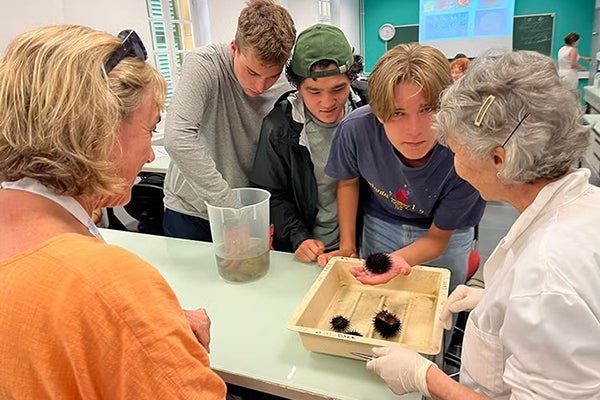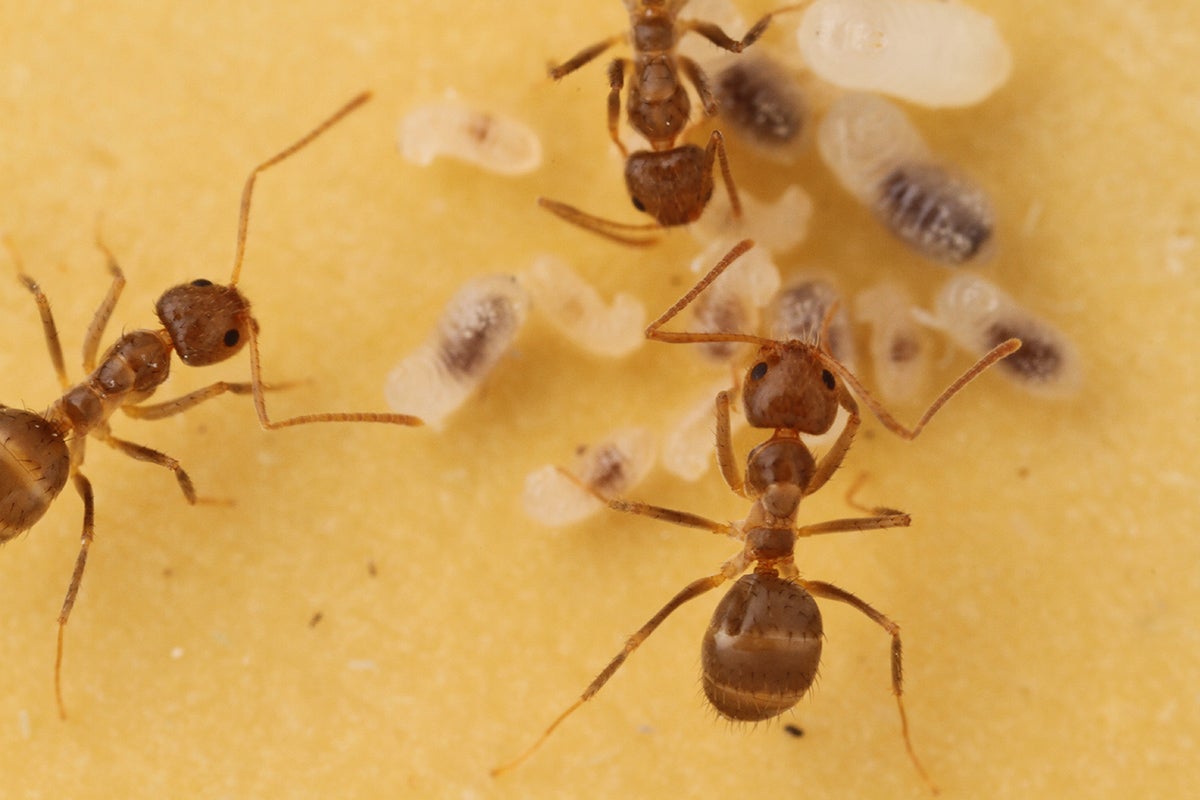Tropical Trees Use Social Distancing to Maintain Biodiversity
Researchers discovered that adult trees in a Panamanian forest are three times as distant from trees of their species as would be predicted.

The spatial distribution of purple-blooming Dipteryx oleifera trees on Barro Colorado Island, Panama. Our analysis reveals that for this species, the distance between an adult tree and its nearest neighbor is 5.5 times as far as expected based on where the seeds fall, and each tree has only 2% of the neighbors expected within 20 meters. The average distance to which seeds are dispersed is estimated to be 16.8 meters. Credit: Christian Ziegler.
Tropical forests can harbor hundreds of species of trees in a square mile, but scientists often struggle to understand how such a diversity of species can coexist. In a study published in Science, researchers at The University of Texas at Austin have provided new insights into the answer by uncovering a key characteristic of the spatial distribution of adult trees.
Combining computational modeling with data collected during a 30-year period, the researchers discovered that adult trees in a Panamanian forest are three times as distant from other adults of the same species as what the proverbial “the apple doesn’t fall far from the tree” would suggest.
Annette Ostling, an associate professor with the University’s Oden Institute for Computational Engineering and Sciences and the Department of Integrative Biology, and postdoctoral researcher Michael Kalyuzhny used data collected from a forest research plot the size of 100 football fields located on Barro Colorado Island in the Panama Canal, which has been studied for the past 100 years. The researchers discovered the distance that the trees are from one another is much greater than the distance that seeds typically travel.
“This is a steppingstone to understanding the dynamics of things like carbon storage that matter in relation to climate change,” Ostling said. “It’s such a fundamental question that, even if the applications are not yet known, there’s still a lot to learn, and this is one ingredient in understanding,”
The team wondered why there would be so much repulsion (repelling) of the juvenile from its parent tree. The only theoretical explanation is something that would prevent them from establishing near their parents.

Seed pods, seeds and fruit collected by seed traps on Barro Colorado Island. Credit: Christian Ziegler
Using computational models, they found each tree species is much more negatively affected by its own kind than by other species, probably because species suffer from species-specific enemies: pathogens such as fungi or herbivores such as insects. These enemies “make room” for other species to establish around every tree, leading to a more diverse forest and keeping any one species from dominating.
“Due to an abundance of available data on this particular forest, we knew the exact location of every tree and also how far seeds travel,” Kalyuzhny said. “We were able to ask: How should the forest look if trees just established where the seeds fell? With our computational models, it turned out that the real forest does not look like this at all – the real trees are much more far apart.”
In a time of an ongoing mass extinction, scientists have been working to better understand what determines species diversity. The researchers said the study helps bridge the gap between contrasting theories on how forests are shaped and provides critical tools to learn how tropical forests in particular and their inhabitants change through time.

Michael Kalyuzhny and Annette Ostling. Credit: Joanne Foote
“Trees are the engineers that provide resources for the entire ecosystem, and since most of the species in the world reside in the tropics, we must better understand what maintains the biodiversity of planet Earth,” Kalyuzhny said. “Many medications are sourced from the tropics, including thousands of substances with anti-cancer activity. The research digs into this fundamental question about the natural world.”
In addition to Ostling and Kalyuzhny, the Smithsonian Tropical Research Institute’s S. Joseph Wright, a senior scientist and collaborator on this research, and Jeffrey K. Lake of the University of Michigan co-authored the research.
The research was funded by the Michigan Life Sciences Fellowship, Zuckerman STEM Leadership Program, sabbatical support from the University of Michigan and Adrian College, MCubed, The University of Michigan, Associate Professor Support Fund, and the Ostling Lab at The University of Texas at Austin.



